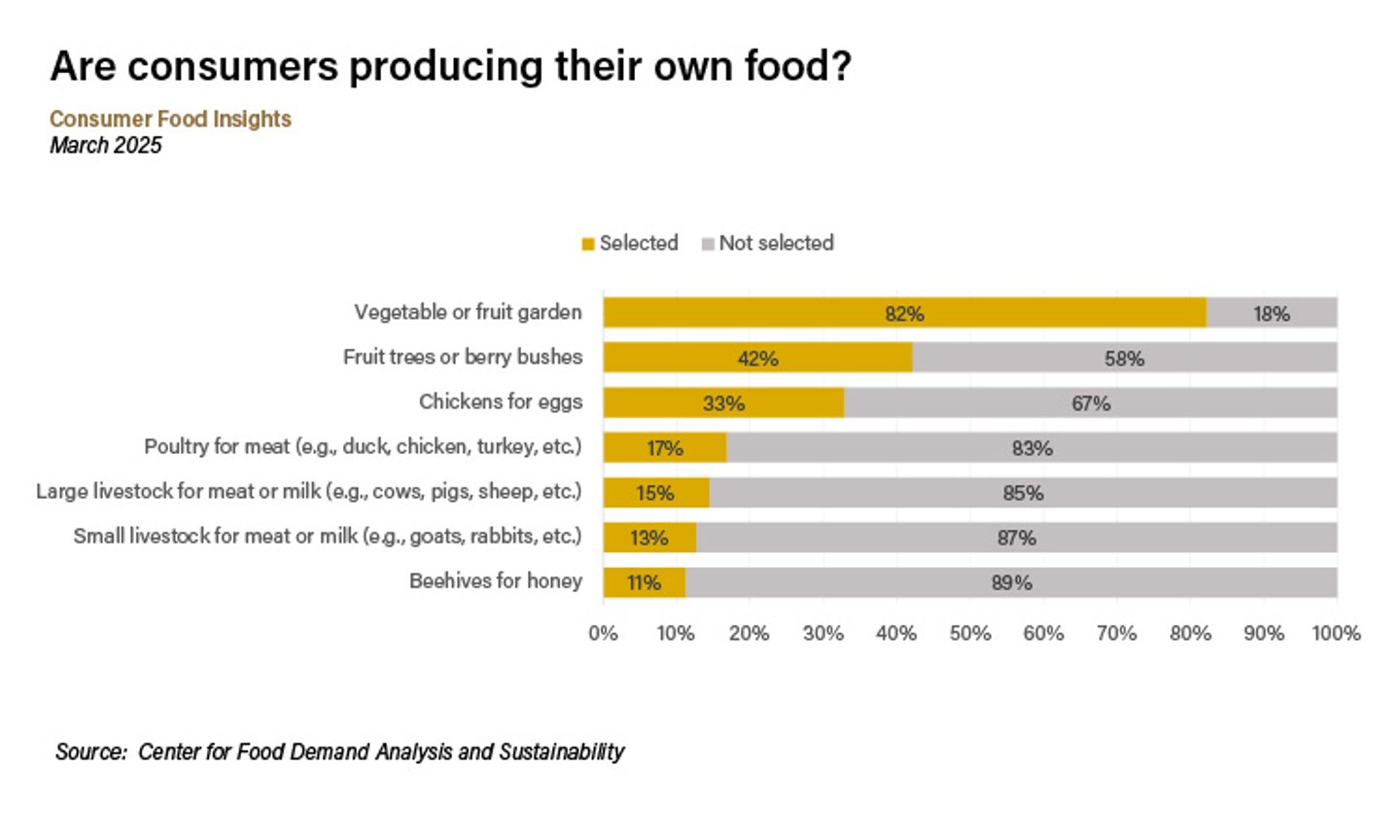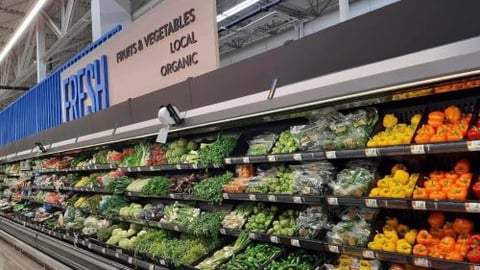Are Inflation-Weary Consumers Growing Their Own Food?
As growing season arrives in more parts of the United States, new market research shows that more people may be gardening to balance out their food spending. According to a survey from Purdue University’s Center for Food Demand Analysis and Sustainability (CFDAS), 84% of consumers describe grocery prices in their area as “high” and 44% say they currently produce or plan to produce their own food.
Most households that are supplementing grocery purchases with homegrown foods will tend to their own mini crops. The most popular production activity is fruit and vegetable gardening, cited by 82% of survey respondents.
[RELATED: Why Consumers Can’t Wait for Government to Fix Grocery Prices]
Typically depending on where consumers reside and their living space, other food production activities are in the mix as inflation remains elevated. “One-third of households that produce their own food have or plan to have egg-laying hens,” reported Joseph Balagtas, professor of agricultural economics at Purdue, director of CFDAS and lead author of the report. “With the ongoing egg shortage caused by avian flu, administering this question in future months could give us insight into whether more consumers are turning to producing their own eggs to fulfill their demand.”
A lower percentage of consumers are delving into husbandry. About 15% raise livestock for meat or milk or tend to beehives for honey, the research revealed.
Purdue’s latest report uncovered some other attitudes and behaviors headed into late spring and summer. For example, nearly a third (30%) of those polled said they been looking for more deals over the past year and 26% are switching to less expensive brands, up 6% from last year.
“Consumers continue to express frustration with inflation, as general inflation and the economy are cited by 36% of consumers as the main factors influencing food prices,” pointed out Balagtas. “Nearly a quarter are unsure what is influencing food prices. Around 13% of consumers attribute current grocery prices to specific supply chain, production and labor issues, and 8% say corporate greed or price gouging are to blame.”






